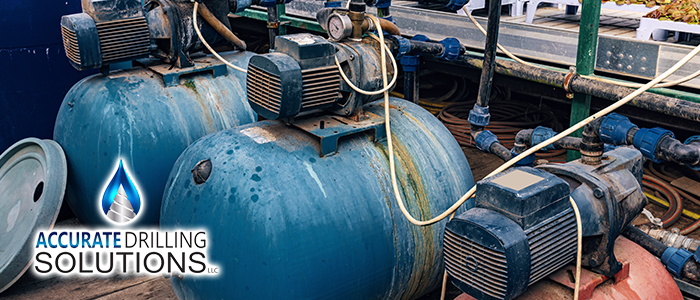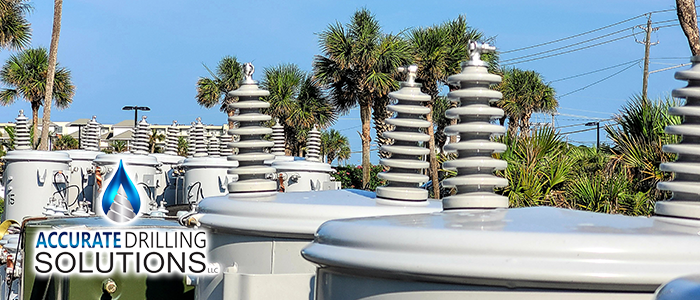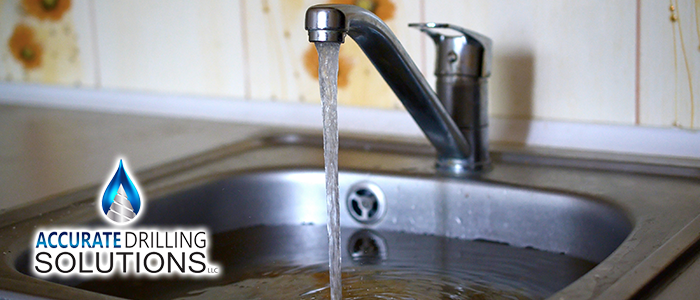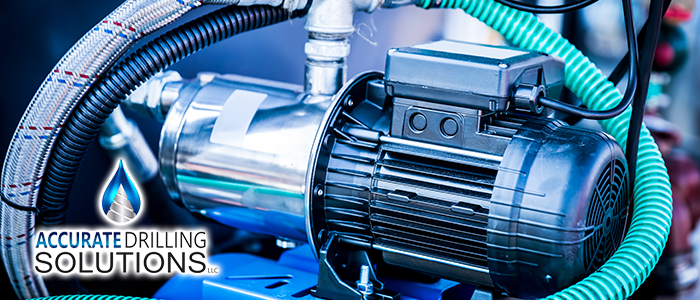
North Port: Understanding Your Well System Options
For homeowners and property developers in North Port and surrounding areas like Venice, securing a reliable source of water often means exploring private well systems. Unlike municipal water supplies, a private well offers independence but also requires understanding the various components and choices involved. Making informed decisions about your water source is crucial for ensuring water quality, system longevity, and cost-effectiveness. This guide aims to provide a clear overview of North Port Well System Options, helping you navigate the process from initial consideration to final installation and maintenance.
Understanding the Basics of Well Water
Before diving into specific system types, it’s essential to grasp the fundamentals of groundwater and wells. Groundwater is water held underground in the soil or in pores and crevices in rock, known as aquifers. A water well is essentially a structure created in the ground by digging, driving, or drilling to access this groundwater. The performance and type of well system required depend heavily on the local geology, the depth of the water table, and the intended water usage (household needs, irrigation, etc.). In the North Port area, the characteristics of the Floridan aquifer system play a significant role. Understanding factors like potential water quality issues (hardness, iron, sulfur) and expected yield (gallons per minute) is the first step in choosing the right system.
Accurate Drilling Solutions utilizes advanced techniques and local expertise to assess potential well sites. This includes evaluating geological surveys and sometimes conducting test bores to determine the optimal location and depth for a new well. This initial assessment is critical because it informs the type of pump and storage system that will be most effective and efficient for your specific property in North Port or nearby communities like Venice.
Common Types of Residential Well Systems
When considering North Port Well System Options, homeowners primarily encounter two main types of pump systems designed for residential use: jet pumps and submersible pumps. Each has its advantages and is suited for different well depths.
Jet pumps are typically used for shallower wells, generally less than 25 feet deep, although deep well jet pumps can be configured for depths up to around 100-120 feet. They work by creating suction to draw water up from the well. Shallow well jet pumps have the motor and pump mechanism located above ground, making them easily accessible for maintenance. Deep well jet pumps use two pipes – one to push water down (creating the jet action) and another to lift water up. While often less expensive initially, jet pumps can be less efficient than submersible pumps, especially for deeper applications.
Submersible pumps, as the name suggests, are installed entirely underwater inside the well casing. The motor and pump are a single unit lowered into the well. These pumps push water up to the surface rather than pulling it, making them highly efficient for a wide range of well depths, including very deep wells common in some parts of Florida. They are generally quieter since the motor is submerged and are less prone to freezing in colder climates (though less of a concern in North Port). While potentially having a higher upfront cost, their efficiency and reliability often make them a preferred choice for primary home water supply.
Factors Influencing Your Well System Choice
Selecting the ideal well system isn’t just about the pump type. Several critical factors must be considered to ensure your system meets your household’s demands reliably and safely.
Water Demand is paramount. Calculate your peak water usage – consider the number of bathrooms, occupants, water-using appliances (dishwashers, washing machines), and any outdoor irrigation needs. This helps determine the required flow rate (gallons per minute, GPM) and pressure (pounds per square inch, PSI). Well Depth directly influences the type of pump needed, as discussed earlier. A deeper well necessitates a more powerful pump, typically a submersible one. Well Yield, or the rate at which the aquifer can supply water to the well, must be sufficient to meet your demand. A professional well yield test is crucial before finalizing system design. Water Quality in the North Port and Venice areas can vary. Testing for minerals (like calcium and magnesium causing hardness), iron, sulfur, bacteria, and nitrates is vital. Results may necessitate water treatment systems (softeners, filters, UV purification) integrated with your well system. Finally, Budget considerations include not only the initial installation cost but also long-term operating expenses (electricity for the pump) and maintenance requirements.
The Well Drilling and Installation Process
Once you’ve assessed your needs and chosen a system type, the actual well installation process begins. This is a specialized task best handled by experienced professionals like Accurate Drilling Solutions. The process typically involves several key stages. First, Site Selection and Permitting involves choosing the optimal drilling location based on geology, setbacks from septic systems and property lines, and obtaining necessary permits from Sarasota County or the relevant local authority. Second, the Drilling phase uses specialized rigs to bore down to the water-bearing aquifer. The diameter and depth depend on the site assessment and planned yield. Third, Well Casing and Screen Installation involves inserting a durable pipe (casing) into the borehole to prevent collapse and surface contamination. A well screen is often placed at the bottom to allow water entry while filtering out sediment. Fourth is Grouting, where the space around the casing is sealed (often with bentonite clay or cement grout) to protect the aquifer from surface contaminants. Fifth, Well Development involves cleaning the newly drilled well to remove drilling residues and fine particles, ensuring clear water flow. Finally, Pump System Installation includes setting the pump (jet or submersible), installing the pressure tank, controls, and connecting the system to your home’s plumbing.
Proper installation is crucial for the system’s efficiency, longevity, and the safety of your water supply. Adherence to state and local regulations, like those outlined by the Florida Department of Environmental Protection (DEP), is mandatory.
Essential Components: Pressure Tanks and Controls
A well pump doesn’t work in isolation. It’s part of a system that includes crucial components like pressure tanks and control switches, which ensure consistent water pressure and protect the pump.
The pressure tank serves multiple purposes. It stores a reserve of water under pressure, reducing how often the pump needs to cycle on and off. This extends the pump’s lifespan and provides more consistent water pressure at the taps. When you open a faucet, water comes from the tank initially. Only when the pressure drops below a preset level does the pressure switch activate the pump to refill the tank and supply ongoing demand. Pressure tanks contain an air bladder or diaphragm that separates air and water, maintaining pressure within the system.
The pressure switch is the brain of the system’s basic operation. It’s an electrical switch that senses the water pressure in the tank. It has two set points: a cut-in pressure (low setting, turns pump on) and a cut-out pressure (high setting, turns pump off). Proper calibration of this switch is vital for efficient operation. Other controls might include overload protection for the pump motor and potentially variable frequency drives (VFDs) for more sophisticated systems, offering even smoother pressure control and energy savings.
Maintaining Your North Port Well System
Once installed, your well system requires regular maintenance to ensure continued performance and water quality. Neglecting maintenance can lead to costly repairs, poor water pressure, and potential contamination.
Regular water testing is perhaps the most critical maintenance task. The U.S. Environmental Protection Agency (EPA) recommends annual testing for bacteria, nitrates, and pH, with less frequent testing for other contaminants unless specific issues are suspected. Visual inspections of well components (wellhead, pressure tank, visible piping) should be done periodically, looking for leaks, corrosion, or damage. Listen for unusual noises from the pump, which could indicate wear. Consider professional inspections; companies like Accurate Drilling Solutions offer maintenance agreements that include periodic checks of the pump, pressure tank, electrical components, and water quality screening. They can identify potential problems early, saving you from major failures down the line. Proper wellhead protection is also key – ensure the well cap is secure and the area around the well slopes away to prevent surface water pooling and potential contamination.
- Annual Water Testing (bacteria, nitrates, pH)
- Periodic Visual Inspection (wellhead, tank, pipes)
- Listen for Pump Noise Changes
- Professional System Check-up (recommended annually)
- Maintain Proper Wellhead Drainage
- Keep Records of Maintenance and Testing
Considering Water Treatment Options
Depending on the results of your water tests, you may need to incorporate water treatment solutions into your well system. Groundwater in Florida, including the North Port and Venice areas, can sometimes contain minerals or elements that affect taste, odor, or usability.
Common issues include Hardness (high levels of calcium and magnesium), which can cause scale buildup in pipes and appliances. A water softener is the typical solution. Iron and Manganese can cause staining (red/brown or black) and metallic tastes. Specialized iron filters are effective. Hydrogen Sulfide causes a “rotten egg” smell and can be treated with aeration systems or oxidizing filters. Low pH (acidic water) can corrode plumbing. A neutralizing filter can raise the pH. Bacteria or Microorganisms, though less common in properly constructed deep wells, require disinfection, often using UV light systems or chlorination. Sediment or Turbidity can be addressed with sediment filters. Choosing the right treatment requires accurate water testing and professional advice to ensure compatibility with your well system and plumbing.
Conclusion: Partnering for Reliable Water
Choosing, installing, and maintaining a private well system involves careful consideration of your property’s specific conditions and your household’s water needs. Understanding the different North Port Well System Options, from pump types like jet and submersible pumps to essential components like pressure tanks and the importance of water testing and treatment, empowers you to make sound decisions. Whether you are drilling a new well or servicing an existing one in North Port or Venice, partnering with experienced professionals is key.
For expert well drilling, system installation, maintenance, and water treatment solutions tailored to the unique conditions of Southwest Florida, trust the team at Accurate Drilling Solutions. Visit https://accurate4.com to learn more about their services and how they can ensure a safe and reliable water supply for your home.
continue reading
Related Posts
Palmetto Business Owners’ Guide to Well System Efficiency For businesses
Water Quality Solutions for Zephyrhills Homeowners For homeowners in Zephyrhills
Wesley Chapel’s Guide to Commercial Pump Installation For businesses and





